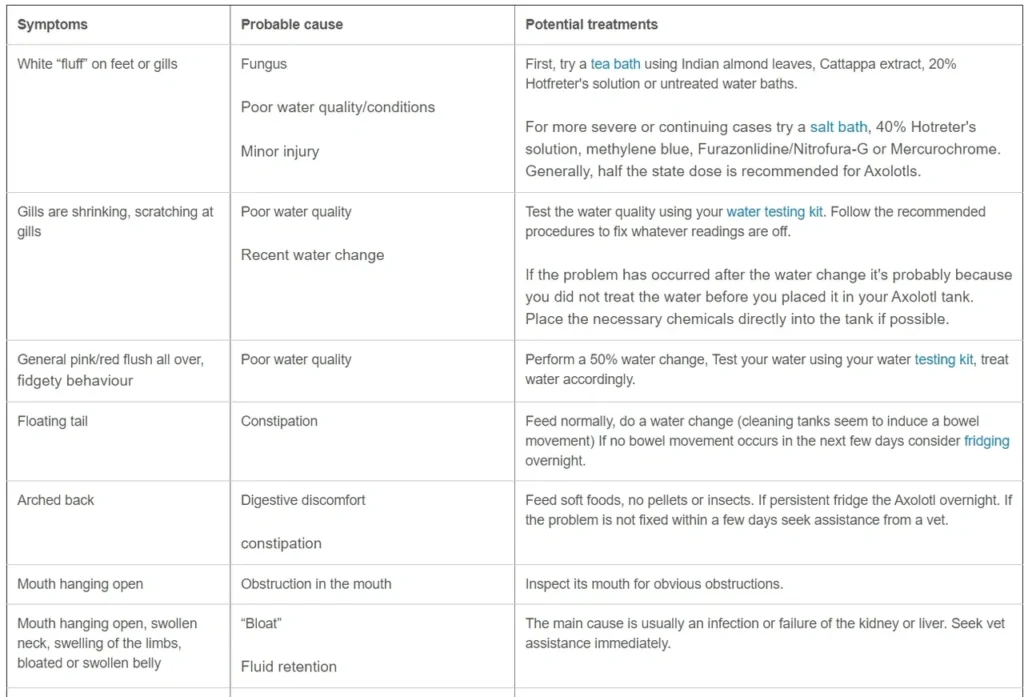Sick Axolotl – Identifying and Treating Common Axolotl Illnesses: A Comprehensive Guide
The first thing to do when you suspect your Axolotl maybe ill is to isolate. This will reduce stress and prevent the spread of any disease. Keep your sick Axolotl in a tub, bucket or hospital tank. If you don’t have a filter in the quarantine tank you need to change the water daily. Below are some brief descriptions of the types of illnesses and a graph with treatments at the bottom of the page.
Although Axolotls are hardy animals poor living conditions for a period of time will lead to diseases and other illnesses. Poor water conditions and stress are the most common causes of illness. Some problems can be resolved with a simple water change, salt bath, tea bath, Melafix .e.t.c. Some may need medical attention by a specialized vet which can be expensive.
Axolotl safe chemicals and medication
Test your water – ideal conditions are:
- Ammonia and nitrate = 0
- Nitrate < 40ppm
- Ph = 7-8
Signs of stress
The most common sign of stress is a tail that curves like a hook and gills that curve forward like the letter C.
Nutritional deficiency
Like all live creatures, including ourselves, nutrition is key. You should try to feed your Axolotl nothing but the best food available. It’s always a good idea to vary the diet of your Axolotl so they get a good variety of different vitamins and minerals. The ideal food source for Axolotls because it’s said to meet their needs perfectly is live earthworms. 62.2% protein, 17.7% fat, 1.72% calcium, and 0.90% phosphorous. Nutritional problems can lead to problems that are generally not noticeable until it’s too late. Some problems that may occur are liver failure, weakened immune system, kidney failure, and fluid disorder.
Parasites
Parasites, in general, can be very tricky to get rid of, especially if internal. Most parasites will require meds from a vet. Parasites can come from a number of sources but most common when introducing non-native plants or animals. Some symptoms could be puking, discoloration and loss of appetite.
Fungal infection
Fungal Infections can happen almost anywhere from the gills to the legs and even the eyes. Fungal infections usually look like a c cotton fluff or ball. The best at-home remedy for fungal infections is salt baths. Fungal infections are one of the most common illnesses in an Axolotl. Fungal infections are most commonly caused by injuries, poor water quality, and prolonged periods of high temperature.
Bacterial infections
Bacterial infections are caused by bacteria. Sometimes a bacterial infection can be carried by the blood cells and spread very quickly throughout the body. Bacterial infections are very contagious. Bacterial infections can be caused by poor water quality, infected food, and introducing unsterile plants.


